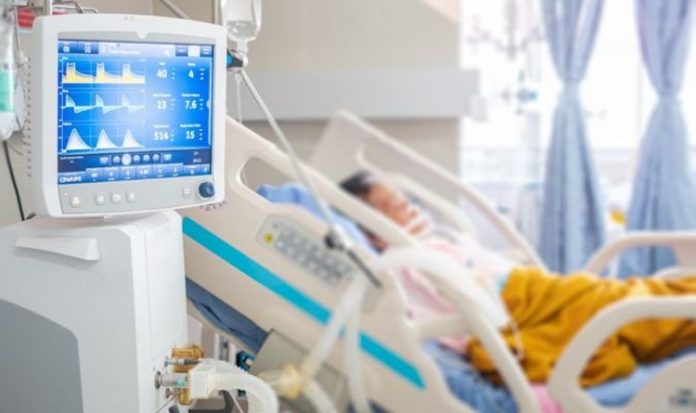Prime Minister Boris Johnson said the NHS was at great risk of becoming overwhelmed when he announced the lockdown on Monday. Winter is normally a very busy time for the NHS anyway as it coincides with the peak of flu season, which is why patients often face long waiting times for care and ambulances. Ambulances and care services are stretched, struggling to get patients into emergency departments. But this year, the system is facing added pressure of preventing the Covid-19 virus from spreading between patients.
How busy are hospitals really?
Statistics suggest that the proportion of NHS beds occupied by patients is actually lower than usual.
The data shows hospitals were at about 87 percent capacity in December and early January.
This figure was increased to just over 90 percent during the same period for London and the South East.
So for every 10 hospital beds available in England, roughly nine had a patient occupying them on any given day.
READ MORE: London emergency: Critical incident declared at hospitals
This occupancy rate is, however, noticeably lower than normal.
During a normal winter, occupancy for hospital beds tends to average between 93 and 95 percent.
But NHS England warns against using comparisons such as these, because it’s not possible to compare like-for-like exactly how hospitals are being run.
Effectively, bed occupancy shows how many beds are available if patients need them, but fails to paint a picture of how much work is needed to tend to these beds.
This figure is set to reduce the risk of staff becoming overstretched or being unable to deal with an unexpected surge in patents for whatever reason.
The Covid crisis has meant hospital bosses have deemed it necessary to ensure there’s even more wiggle room than usual due to the rapid rate at which the virus spreads.
The number of patients in hospitals in England with the virus has increased by 8,000 since the start of December, hitting a record high of 22,534 at the beginning of the month.
And another effect of the pandemic is the impact on healthcare staff themselves.
Once the virus is prevalent in a community, hospital staff inevitably need to take time off due to sickness or self isolation.
During the first wave in April, 6.7 percent of staff were absent from work, compared with just four percent in 2019.
So it’s understandable that while hospitals are feeling the increased pressure this winter, they also need to ensure they have enough room to manoeuvre and plan for unexpected crises.
Outside the NHS, the Government is able to work with private hospitals and look at using the Nightingale hospitals, but this is also likely to be affected by staffing shortages and pressure.







